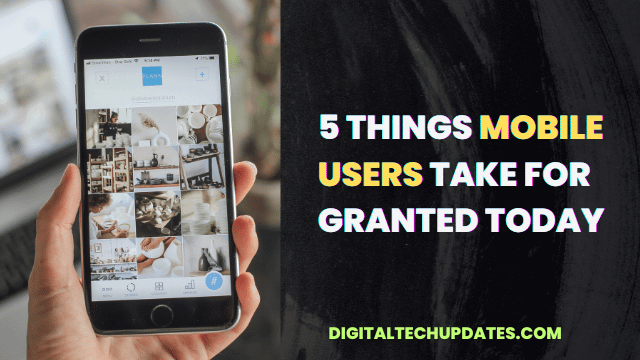Your smartphone has more computing powerthan the world’s best supercomputer back in the 1980s.
It’s easy to take for granted that little rectangle in your pocket or purse. It’s difficult, impossible, for many of us to remember what life was like before the smartphone era. More and more of us are too young to remember anyway.
But as you’ve probably heard from role models in your life more times than you’d like, it’s best not to take anything for granted. Certainly not anything as transformational as the smartphone.
So let’s take a moment to express gratitude for the mobile revolution — and take a few detours down memory lane to the time before everyone had smartphones.
1. MVNOs
MVNO stands for “mobile virtual network operator.” In a nutshell, a MVNO is a mobile content provider that uses existing wireless networks to create its own mobile network that paying customers can access. Most discount wireless providers today are MVNOs.
In the 2000s, which many today remember as the “Wild West” era of MVNOs, the market was even more fragmented than today. MVNOs back then weren’t as useful as today’s, and in fact few have survived unchanged. For example, Disney and ESPN had old-school MVNOs that look nothing like their current streaming offerings.
One of the most ambitious first-gen MVNOs wasSky Dayton’s Helio, which was modeled after the more comprehensive content providers Dayton observed in Europe and Asia during the mid-2000s. Though Helio ended up being gobbled up by Virgin and then Sprint (and then, eventually, T-Mobile), it set the standard for the MVNOs we know today, which industry experts agree have been critical in driving mobile penetration for less affluent consumers.
2. LTE Data
Another day, another acronym. This one means “Long-Term Evolution,” which gets at the ever-evolving nature of wireless data transmission.
But LTE wasn’t always a thing. Back in the early smartphone era, 3G was as good as it got, and if you can remember that far back you know just how challenging it was to watch streaming content on that standard. Even earlier, 2G was the norm, good for only the simplest applications beyond talk and text.
Maybe more than any other technological innovation, LTE is responsible for the smartphone revolution. Remember that next time you load a YouTube video in half a second flat.
3. Secure Mobile Payments
Like MVNOs, secure mobile payments appeared and matured in other parts of the world (chiefly Asia and Africa) before making it to the United States.
Before they came onto the scene, you entered your credit card on mobile websites at your own risk. And “risk” is really understating things: Scammers made a killing by stealing credit and debit card numbers from unsuspecting consumers back in the day.
4. Mobile Apps That Actually Do Useful Things
The mobile app economy didn’t really get off the ground until a critical mass of early adopters had iPhones in their pockets. But it was a while longer before those apps were useful for anything other than diversionary activities like personal gaming.
Nowadays, you probably rely on mobile apps for everything from ordering groceries to paying your credit card and utility bills. And those apps are, for the most part, fast, secure, and user-friendly. It’s a sea change from the way things were not too long ago.
5. Biometric Security
Facial recognition or fingerprint unlock come standard in most smartphones nowadays, but that hasn’t been the case for long. Before then, numeric passwords were the norm.
And beforethen? Good luck not losing your phone!
What’s Next for Mobile Computing?
Phones today are vastly more powerful than anyone believed possible even 20 years ago. And thoughMoore’s Law appears dead, each new generation improves on the last.
Predicting the future of tech is hard. Rather than try to extrapolate based on current products or trends, maybe we should try to imagine the sorts of things tomorrow’s consumers might take for granted.
Chances are, those things will seem pretty strange to us. Smartphone-like devices integrated into our eyes and brains, sentient AI assistants that manage our daily lives, immersive virtual reality that’s impossible to distinguish from the real world — and that’s all just what we can imagine today.




